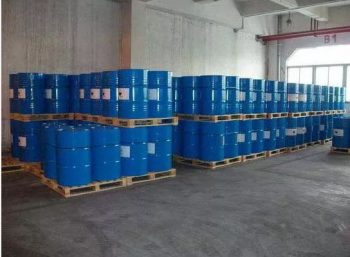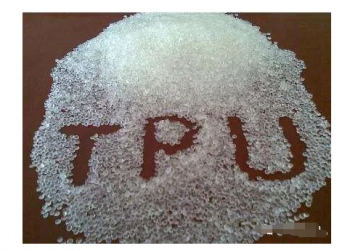A quick reference manual on additives worth 3W, a must-have for modified plastic R&D engineers!
Nothing in the world is perfect, and in the modified plastics industry, such examples are even more common. Because, whether it is thermoplastic or thermoset, although the materials have been carefully selected, there will always be some plastics that are unsatisfactory during processing, molding or use. For this reason, in order to meet the requirements during processing, molding or use, plastics must be modified.
Because some materials have good toughness but poor flame retardancy; some materials have good electrical conductivity but poor heat resistance; some materials have good overall properties but poor aging resistance and yellowing resistance. At this time, the most effective rescue for modified plastic people is-“plastic additives”. Additives in plastics: small body, big energy.
Plastic additives, also called plastic additives, are some compounds that must be added when polymers (synthetic resins) are molded to improve their processing properties or to improve the insufficient properties of the resin itself.

1. What can additives do?
What can additives do? I think anyone who wants to modify plastics knows this very well. For example: improving processing performance, improving mechanical properties, improving optical properties, improving aging properties, improving surface properties, reducing costs and improving other properties. Let’s start with a table to get an overall feel.
Table Functions and Categories of Plastic Additives
Improve processing performance
Lubricants, release agents, stabilizers, processing aids, thixotropic agents, plasticizers, PVC stabilizers
Improve mechanical properties
Plasticizer, reinforcing filler, toughening agent, resistance modifier
Improve optical performance
Pigments, dyes, nucleating agents, fluorescent whitening agents
Improve aging performance
Antioxidants, PVC stabilizers, UV absorbers, fungicides, and antifungal agents
Improve surface properties
Antistatic agent, slip agent, wear-resistant agent, anti-adhesive agent, anti-fog agent
Reduce costs
Thinner, solubilizer, filler
Improve other performance
Foaming agent, combustion accelerant, chemical cross-linking agent, coupling agent
Although additives can improve some properties of plastics, not every plastic can be added with different additives. This is mainly because some additives will react with the plastic itself, which not only fails to improve the shortcomings of the plastic itself, but also makes the material performance worse, and has an immeasurable impact on human health, the environment, etc. Therefore, today we will learn about the additives of various plastics one by one from the overall perspective, so as to improve our understanding of the properties of plastics.

2. Introduction to auxiliaries
1. Flame retardant
Flame retardants are functional additives that make flammable polymers flame retardant. They are mainly designed for flame retardancy of polymer materials. There are many types of flame retardants, which are divided into additive flame retardants according to their usage methods. agents and reactive flame retardants.

With the country’s increasing emphasis on environmental protection, the development trend of flame retardants will be new flame retardant systems that are non-toxic, halogen-free, low-smoke, have minimal impact on the environment and have the best flame retardant properties.
Classification and classic introduction of flame retardants
2. Antioxidants/light stabilizers
Antioxidants are a class of chemicals that, when present in only small amounts in a polymer system,��; Foaming agents all have high surface activity, which can effectively reduce the surface tension of the liquid, and arrange double electron layers on the surface of the liquid film to surround the air, forming bubbles, and then single bubbles form foam.
Foamed TPU material
For more knowledge related to foaming agents, you can click on the blue link:
The residual amount of AC foaming agent in shoe materials is limited, but can it be used in food?
my country breaks the international monopoly and pioneers the chemical synthesis of chlorine-free and fluorine-free polyurethane chemical foaming agents
Plastic foaming, do you know this?
How is the foamed polypropylene material that has been popular in recent years produced?
11. Antistatic agent
Any object has its own static charge. This charge can be negative or positive. The accumulation of static charges can affect or even harm life or industrial production. Guide/eliminate the accumulated harmful charges for use. Chemicals that do not cause inconvenience or harm to production/life are called antistatic agents.
Antistatic agents generally have the characteristics of surfactants, and have both polar and non-polar groups in their structure. Commonly used polar groups (ie, hydrophilic groups) include: anions of carboxylic acid, sulfonic acid, sulfuric acid, and phosphoric acid, cations of amine salts, quaternary ammonium salts, and -OH, -O- and other groups. Commonly used non-polar groups Sexual groups (i.e. lipophilic or hydrophobic groups) include: alkyl groups, alkaryl groups, etc., thus forming five basic types of ASA commonly used in the fiber industry, namely amine derivatives, quaternary ammonium salts, sulfate esters, and phosphoric acid esters and derivatives of polyethylene glycol.
For more knowledge about antistatic agents, you can click on the blue link:
Mechanism classification and application of antistatic agents (recommended collection)
[Dry information] Let’s talk about antistatic agents
A brief discussion on antistatic treatment of plastic pipes
12. Heat stabilizer
During the processing and molding process of plastics, heat will be generated due to heating, friction or shearing, or the performance of plastic products will deteriorate due to heating during use. In order to prevent the degradation and aging of plastics when heated, it is necessary to add a substance that prevents the plastic from decomposing and changing when heated. This substance is called a heat stabilizer.
13. Reinforcement materials
The main function of reinforcing materials is to increase the strength of plastic products. Generally speaking, it is a fiber material, such as glass fiber, metal fiber, natural or synthetic fiber, etc.
Glass fiber
Since fiber materials have high tensile strength, filling them in thermosetting or thermoplastic resins can greatly improve the tensile strength of products, improve rigidity, wear resistance, dimensional stability, rheology, flame retardancy, and reduce weight. Small permeability improves the surface gloss of the product.
14. Filler
It is an inert substance added to plastics in order to reduce costs or improve performance. Common fillers include: calcium carbonate, talc, wollastonite, mica, carbon black, glass beads, ceramics, etc.
15. Fluorescent whitening agent
It is a fluorescent dye, or white dye, and a complex organic compound. Its characteristic is that it can stimulate incident light to produce fluorescence, so that the dyed material can obtain a sparkling effect similar to fluorite, making the material visible to the naked eye very white, achieving a whitening effect.
16. Adhesive
Bonding agent is one of the most important auxiliary materials and is widely used in packaging operations. Adhesives are viscous substances that use their viscosity to connect two separate materials together. There are many types of adhesives.
17. Lubricant
During the process of heating, melting and molding, plastic will be pushed by mechanical force and agitated by shear force. Various frictions will occur between plastics and plastics, and between plastics and machinery. Friction will generate heat, and excessive friction will Frictional heat is generated, which prevents the temperature of the core layer of the plastic from being exported and causes scorching and bubbles. During the plastic processing process, lubricants are generally added to reduce the attraction between polymer molecules, thereby improving its fluidity and lowering the quality of the product. Surface adhesion and the role of plastics sticking to each other. In addition to improving fluidity, lubricants can also function as melting accelerators, anti-adhesive agents, anti-static agents, and slip agents.
18.Plasticizer
Any material that can lower the melting temperature of the resin and improve the fluidity of the resin in the molten state and the softness of the product is called a plasticizer. When plasticizer is added to polymer materials, it can reduce its melt viscosity, glass transition temperature and elastic modulus without changing its basic chemical properties, thereby improving its processability and increasing the softness and flexibility of the product. Materials with tensile properties.
In addition to the above-mentioned additives, there are of course other additives, so I will not give examples one by one. For example: scratch-resistant additives, which are better made by Evonik and BASF, and Milliken nucleating agents, which increase transparency, are very good. At present, with the increasing demand for high-performance materials from terminal enterprises, halogen-free and environmentally friendly flame retardants, compatibilizers that reduce the odor of materials and low VOCs, etc., are of far-reaching significance for improving the performance of the materials themselves.